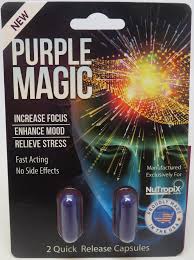Synthetic Amphetamines – 2C family of drugs (aka “Bath Salts”)

Synthetic Amphetamines are becoming more prevalent in the club scene and are very potent and dangerous. They are known as psychedelic phenethylamines, or the 2C Family of drugs, and are more potent and longer lasting than ecstasy. Most of the currently known 2C compounds were first synthesized by Alex Shulgin in the 1970s and 1980s, and published in his book, PiHKAL (Phenethylamines I Have Known And Loved) A love story. These compounds are structurally similar to mescaline and ecstasy and have been sold as a “legal” substitute for ecstasy in raves for years. This family of drugs includes 2C-E, 2C-I, 2C-B, 2C-T, 2C-N, 2C-NT, 2C-P, 2C-G-3, 2C-O, and 2C-T-7. Some street names include smiles, tootsie, blue mystic, 7-up, bees, nexus, and Tripstacy. They are sold online as a white crystalline powder, tablets, or pellets and can be very pure, 98-100%. These drugs are ingested (pill or tablet form), smoked, snorted and used rectally. The high can last anywhere from 4-24 hours with affects similar to ecstasy, but more intense. Common side effects include rapid heart rate, high blood pressure, dilated pupils, dangerously high body temperature, paranoia, hallucinations, chest pain, suicidal ideation, violence, and seizures. These substances have been linked to a number of deaths from serotonin syndrome and prolonged vasoconstriction. The vasoconstrictive effect may persist for days and result in sudden death from coronary artery constriction. Injection of the drug may lead to limb gangrene. Other complications include agitation, hallucinations, seizure, liver failure, or kidney failure. Toxicity may be dose related, and when mixed with other drugs such as alcohol, ecstasy, or cocaine can be lethal.
25I-NBOMe & 25C-NBOMe
25I-NBOMe is a very potent psychedelic stimulant and considered by users to be a legal version of LSD. It is often in liquid form and put on blotter paper. It is active at very low doses (micrograms) and are generally administered on paper placed under the tongue. One indicator that it isn’t LSD, is it causes numbness of the tongue and mouth. The drug is inactive if taken orally and swallowed. The onset of effects is rapid. Effects plateau in 2-4 hours, and can last 6-10 hours – sometimes much longer depending on dose. Side effects may last up to 7 days. Users experience visual hallucinations with color shifts, euphoria, dilated pupils, changes in perception of time, increased awareness, feelings of love and empathy and mental and physical stimulation. Undesired side effects include confusion, scrambled communication, paranoia, panic, and seizures. Clinical features included tachycardia, hypertension, agitation, aggression, visual and auditory hallucinations, seizures, hyperpyrexia, clonus, elevated white cell count, elevated creatine kinase, metabolic acidosis, and acute kidney injury. (Hill SL, Clin Toxicol (Phila). 2013 Jun 4.) Deaths have been reported. 25i is now a scheduled I drug and is known as 25i, smiles, Nbome, cheap acid, designer acid, or research.
Note: The abuse of this drug presents as sepsis, causing death. However, no bacteria are detected in the blood or culture.
Geranium Extract (methylhexanamine) DMAA

Geranium extract (methylhexanamine) or synthetic Dimethylamylamine is marketed as “Pump-It Powder” or Jacked 3D”. Dimethylamylamine (DMAA) is a synthetic drug with the same physiologic activity as geranium extract and was originally sold as a nasal decongestant. Both the plant extract and DMAA may be smoked, ingested, or snorted and effects may last 4-6 hours. The plant extract and synthetic DMAA are sold as dietary-supplements used for treating ADHD, stimulating weight loss, improving athletic performance, and bodybuilding. The ingredient list on packages of geranium may list rose geranium, geranium oil, or geranium stems.
DMAA is now available as 100% pure powder and sold online for laboratory research and labeled “not for human consumption”. Yet, the manufacturer recommends a limited dose of 50 mg accurately measured on a milligram scale to avoid overdose. Effects peak in about 45-60 minutes and last for 4 hours. Taking pure DMAA raises blood pressure and may lead to chest pain and even heart attack. DMAA powder produces stimulant and reward-effects similar to cocaine and methamphetamine and has a strong potential for being abused. A number of adverse events have been associated with DMAA including psychotic symptoms and paranoia, hallucinations, increased heart rate and body temperature, dilated pupils and sluggish response to direct light and distortion of the senses.
DMHA (Dimethylhexylamine)
Known as Octodrine, Vaporpac, Amidrine, or 2-AMINO-6-METHYLHEPTANE. It is a synthetic Amphetamine developed in the 1950’s for use as an inhalant to treat bronchitis, laryngitis, and other conditions. It was never approved for oral use but is showing up in products as a dietary supplement. It shows up in pre-workout , weight loss, and “fat burner” products, and is similar to DMAA which is banned and listed on the world doping list as a Performance Enhancing Drug (PED). It is also banned by the Military. It is on the prohibited dietary supplement ingredient list and is listed as an unsafe food additive. It is banned in the US because there isn’t enough research to determine if it’s safe for humans. The latest animal studies suggest DMHA might cause adverse cardiovascular effects including heart attack and death.
1,3-DMBA (Dimethylbutylamine)

Small amounts can be found in some plants. However, most of the DMBA found in supplements and other products is synthetic(man made). It is similar to DMAA and is a synthetic Amphetamine that the US FDA banned in 2015. It is on the world doping list and is a Performance Enhancing Drug (PED). There are no known human safety studies, and its health effects are entirely unknown. It is showing up in pills found at gas stations, vape shops, and online. It is being mixed with other substances that can make it extremely dangerous if ingested.

